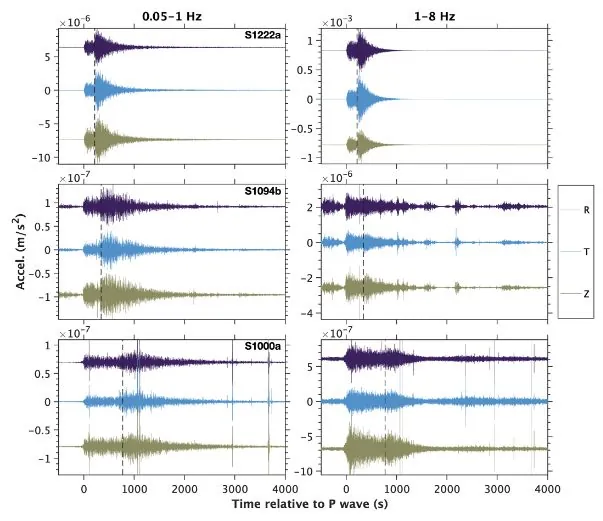Tectonic activity, not meteor impact, behind Mars’ largest recorded seismic event
An international team of scientists led by the University of Oxford has identified the largest-ever seismic event on Mars, known as S1222a, to be the result of tectonic forces rather than a meteorite impact. The event was recorded on May 4, 2022, by NASA’s InSight lander.
The team scoured an expansive area of 144 million km² (55.6 million mi2) on Mars to look for a new meteorite crater that might explain the seismic event. No such crater was discovered, leading to the conclusion that the planet’s internal tectonic activity was the cause.
Data from the quake, which lasted for a minimum of six hours and had a magnitude of 4.7, initially led scientists to suspect a meteorite impact due to similarities in seismic signals from previous meteoroid-induced quakes. Had the event been caused by a meteorite, the resulting crater would have been estimated to be at least 300 m (984 feet) in diameter.

The international initiative, spearheaded by Dr. Benjamin Fernando from the University of Oxford’s Department of Physics, encompassed contributions from the European Space Agency, the Chinese National Space Agency, the Indian Space Research Organisation, and the United Arab Emirates Space Agency. This marked the first time all agencies with missions orbiting Mars collaborated on a single project.
The event has led researchers to infer that Mars is more seismically active than previously thought. Dr. Fernando commented, “The seismic event was likely caused by the release of stress within Mars’ crust. These stresses are the result of billions of years of planetary evolution.”
Dr. Daniela Tirsch, Science Coordinator for the European Space Agency’s Mars Express Spacecraft, and Dr. Jianjun Liu from China’s National Astronomical Observatories emphasized the importance of diverse instrumentation and international collaboration for the study. Dr. Dimitra Atri, Group Leader for Mars at New York University Abu Dhabi, described the project as marking the “golden age of Mars exploration.”
InSight’s recording of this event was among its last before its mission end in December 2022. The knowledge gained from this seismic event will be applied to future work, including upcoming missions to the Moon and Titan, Saturn’s moon.
References:
1 New study reveals source of largest ever Mars quake – University of Oxford – October 17, 2023
2 A Tectonic Origin for the Largest Marsquake Observed by InSight – Benjamin Fernando et al. – AGU Geophysical Research Letters – October 17, 2023 – https://doi.org/10.1029/2023GL103619 – OPEN ACCESS
Featured image credit: AGU/Authors

Commenting rules and guidelines
We value the thoughts and opinions of our readers and welcome healthy discussions on our website. In order to maintain a respectful and positive community, we ask that all commenters follow these rules.